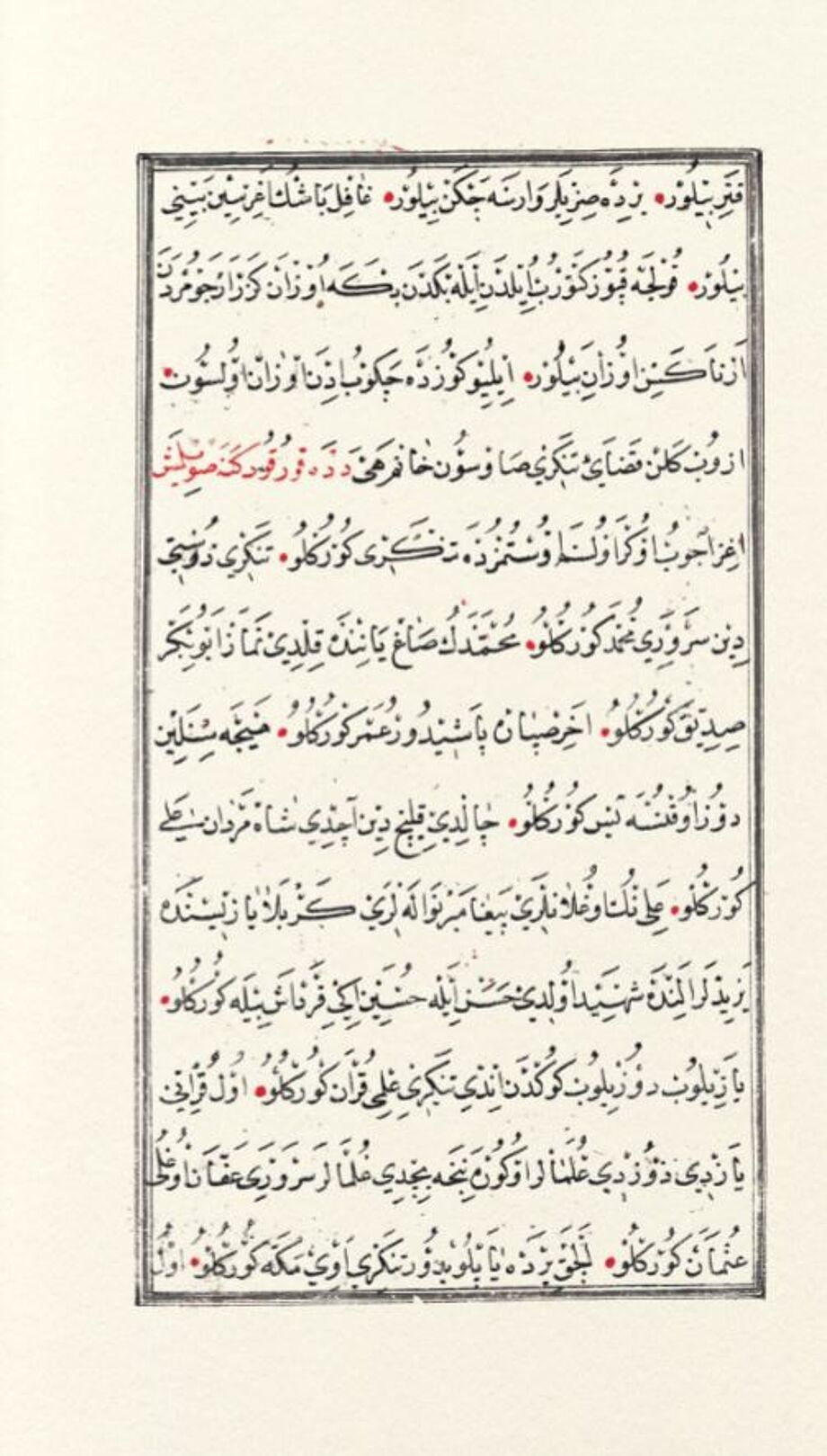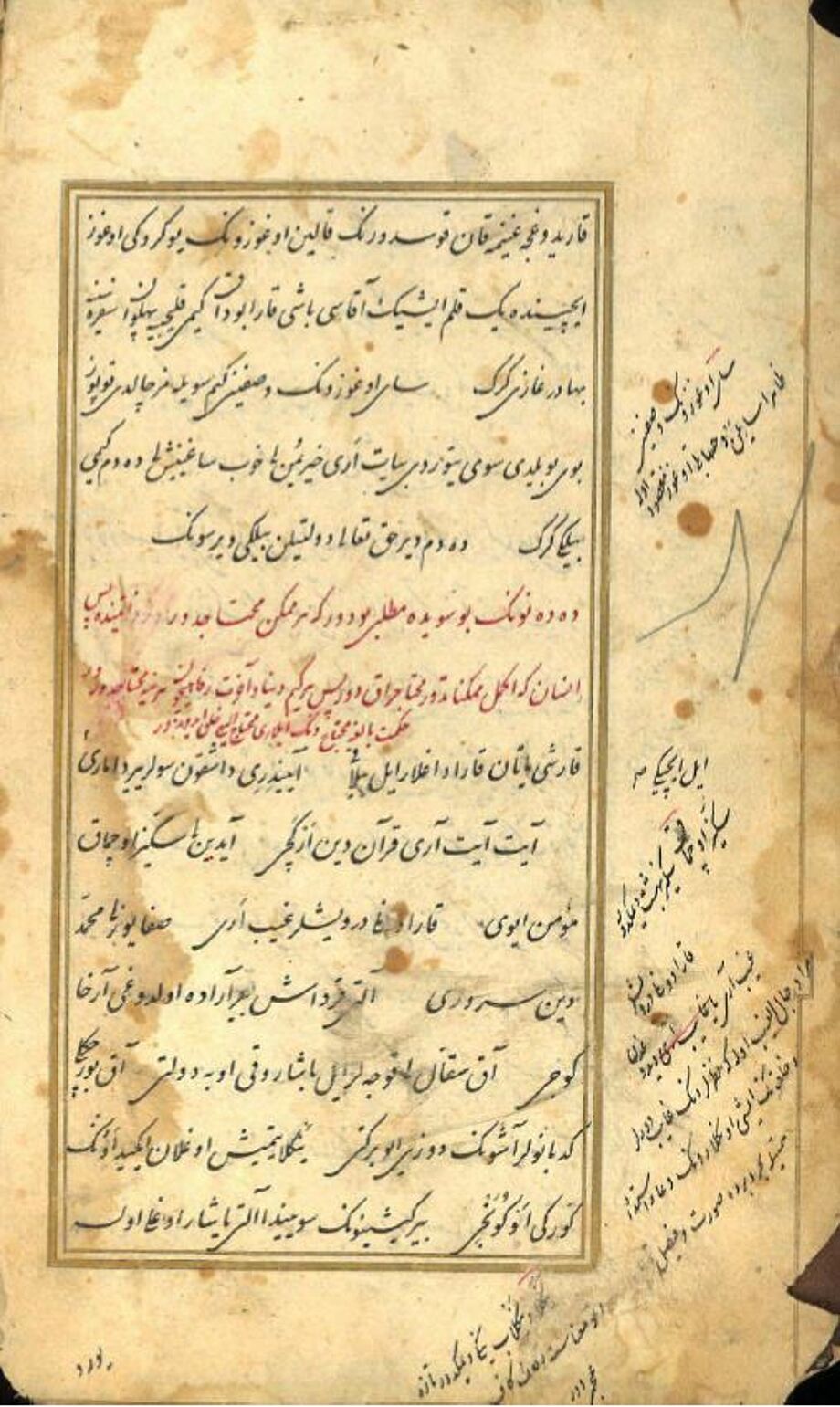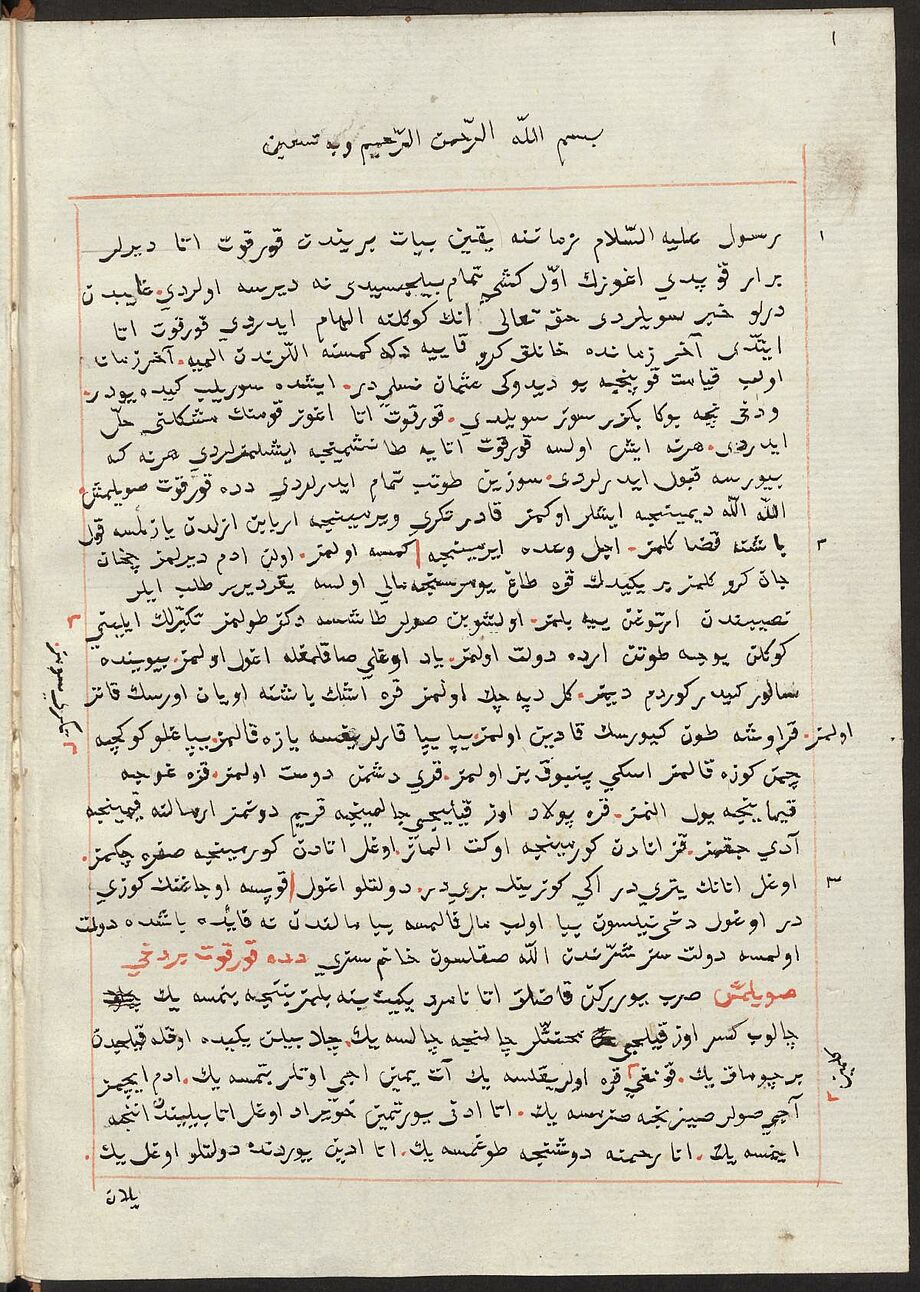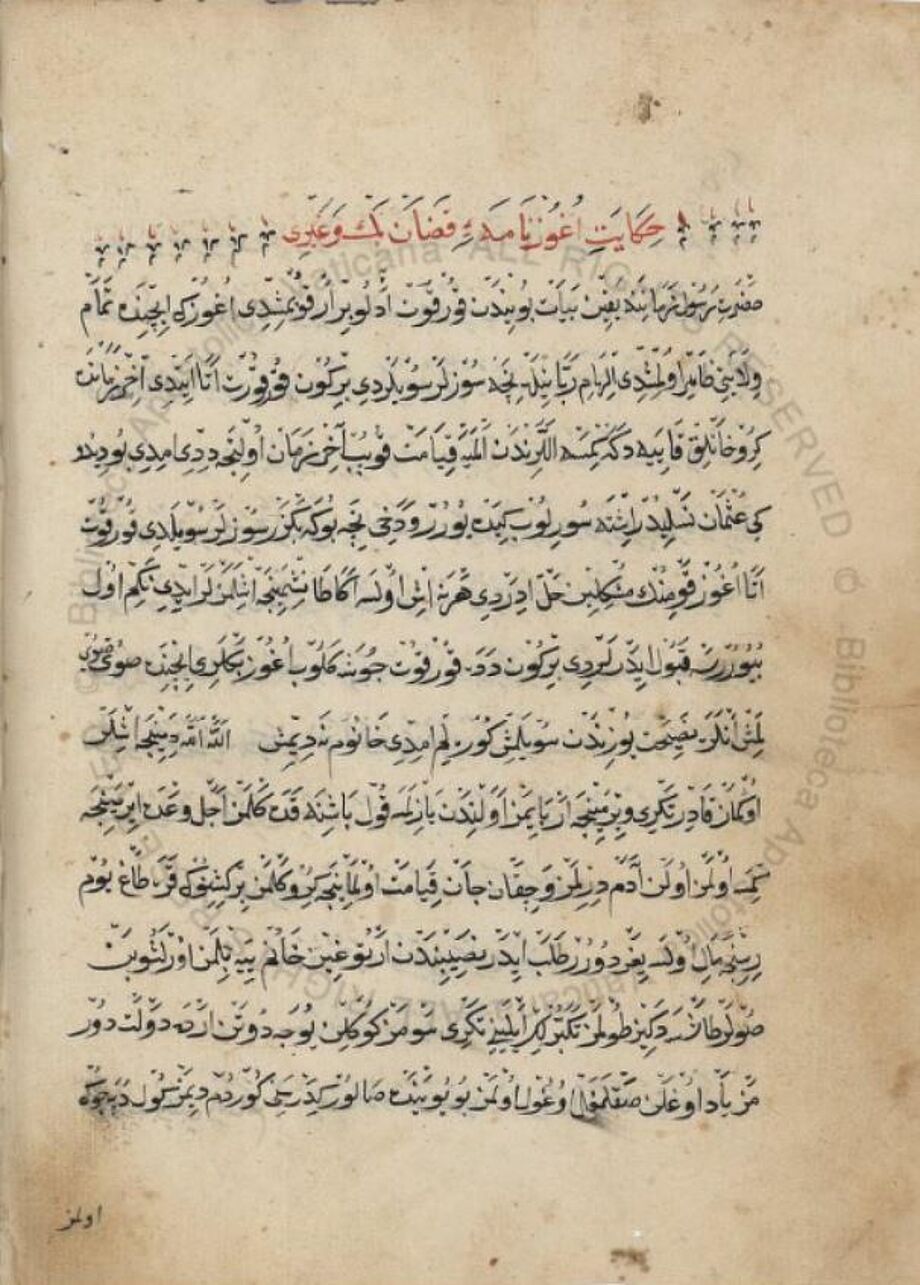Other manuscripts
So far, five manuscripts with stories from the Dede Korkut book are known in addition to the Dresden manuscript:
Vatican manuscript (Biblioteca Apostolica Vaticana, Vat.turc.102).
106 leaves. - On pp. 58v-106r: 6 stories under the title "Hikaye-i Oguz-name-i Kazan Beg ve gayn" (="Narrative of the Oghuz Book about Kazan Beg and the others"), which correspond to stories no. 1 to 4 as well as 7 and 12 of the Dresden manuscript with only a few deviations (including the introductory collection of proverbs). On pp. 2v-58r, a collection of 18 moral tales under the title "Hikäye-i Latıfe-i U'cübe ve Mahcübe-i Zarife". Ownership entries by Shahzada "Alemshash" (1st third of the 16th century).); his son Sunullâh (d. 1549/50); Seyyid Ahmed, son of Seyyid Hasan al-Defteri, 1591 in Egypt; Elvan in Cairo; his brother Mustafa Efendi in Jerusalem 1615/16; San Pietro in Montorio, Rome.
https://digi.vatlib.it/view/MSS_Vat.turc.102/0122https://docplayer.biz.tr/34137028-Turkologiya-dede-korkut-kitabi-nin-vatikan-nushasinin-latince-arapca-farsca-ve-turkce-metin-disi-kayitlari-ozet.html

Bursa manuscript (Bursa, Muradiye Qur'an and Manuscripts Museum, KU00249).
119 leaves (+ 1 missing leaf at the beginning) - Around 1610-1640 - Very similar to the Dresden manuscript. At the beginning also a collection of proverbs and the characterisation of four types of women. Research into the manuscript has only just begun. The mill operator and bus entrepreneur Hüseyin Ünsal from the Fadıllı district of Bursa (Türkiye) donated the manuscript to Mehmet Sait Cosar, Imam of the mosque in Fadıllı, in 2018. Cosar offered it to the collector, antiquarian and businessman Ibrahim Koca in the same year. The latter donated it to the newly opened Muradiye Quran and Manuscripts Museum in 2019.
https://www.bursa.bel.tr/yayinlar_pdf_viewer?id=2401https://www.bursamuze.com/uploads/files/dede-korkut-kitabi-bursa-yazmasi-tipkibasim.pdf http://www.bugudergisi.com/Makaleler/1462889294_1.CalyilmazSalyilmaz.pdf

Günbet manuscript (private collection)
31 leaves (+ at least 1 missing leaf at the beginning) - A copy of an Old Anatolian original from the 16th century made in Iran in the late 18th or 19th century in an Azerbaijani dialect. - Contains 27 "declamations" and two narratives of heroes from the Book of Dede Korkut (XIII: The hero Kazan, with the support of foreign and inner Yugus, defeats an army of infidels [=non-Muslims] one hundred thousand strong and conquers the castle of Qars; XIV: Kazan defeats a seven-headed dragon).Allegedly from the library of Ağa Muhammet Han Kaçar (1742-1797), the founder of the Qajar state (Iran); acquired in 2018 by book collector Veli Mohammad Khoja from the Turkmen Sahra (Northern Iran) region of Tehran.
https://www.academia.edu/39740609https://www.academia.edu/39735680
Ankara manuscript (Ankara, Türk Tarih Kurumu (=Turkish Historical Society), Y. I/0261 (Y001523)).
11 leaves (+ missing leaves at the beginning and end). - Ottoman Turkish. - Contains 1.) a summary of the tales of the hero Oġuz Han, 2.) a variant version of the introduction of the Dresden manuscript entitled "Hikâyeti Korkud Ata" and 3.) part of the tale of the hero Dirse Chan. 2017 discovered.

Berlin, Staatsbibliothek Preußischer Kulturbesitz, Diez A fol. 61
37 leaves. - 1814 - Copy of the Dresden manuscript by Heinrich Friedrich von Diez. From the estate of Heinrich Friedrich von Diez
https://digital.staatsbibliothek-berlin.de/werkansicht/?PPN=PPN83400139X
In addition, there is a Turkmen collection of 16 Gorgut Ata stories published by Ata Rahmanov in 1988.
Some of the characters and motifs in the heroic stories of Dede Korkut also appear in the epics or tales of Oghuz Khan (or Kaghan), the legendary ancestor of the Turkic peoples, and his successors, known as "Oghuzname". Around 30 Oghuzname have survived in manuscripts from the 14th to 16th centuries.
hdl.handle.net/20.500.12575/34956https://dergipark.org.tr/tr/pub/meric/issue/51352/640323 https://islamansiklopedisi.org.tr/oguzname
